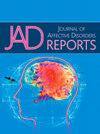rTMS是否能调节难治性抑郁症患者的小胶质细胞表型?使用iMG细胞进行转录组分析
Q3 Psychology
引用次数: 0
摘要
神经炎症假说被认为是抑郁症的病理生理机制,而小胶质细胞在抑郁症患者的神经炎症反应调节中起着至关重要的作用。我们最初开发了人血诱导小胶质样细胞(iMG),它是预测人脑小胶质细胞活动的替代细胞,用于逆向翻译研究。反复经颅磁刺激(rTMS)是改善难治性抑郁症(TRD)患者抑郁症状的有效治疗方法;然而,其细节仍不得而知。本研究的目的是预测rTMS如何利用TRD患者的iMG细胞改变小胶质细胞的表型。方法对5例TRD患者进行频率(10hz) rTMS研究。对TRD患者在基线和6周rTMS治疗结束时的iMG细胞进行微阵列分析,包括免疫、炎症、吞噬、代谢综合征和脂质五个领域。结果5例患者中3例对rTMS有反应,2例对抑郁症状无反应。应答者的芯片分析显示,rTMS治疗显著增加了21个基因的RNA表达,其中包括与神经炎症相关的基因,具有促进神经炎症的方向,并显著降低了4个基因的RNA表达。主要的限制是样本量小和缺乏使用假rTMS程序的控制条件。结论rTMS治疗可能改变TRD患者的iMG基因,包括免疫相关基因。未来的研究应该使用更大的患者样本量和假rTMS程序来证实这些发现。本文章由计算机程序翻译,如有差异,请以英文原文为准。
Does rTMS modulate phenotype of microglia in patients with treatment-resistant depression? A transcriptome analysis using iMG cells
Background The neuroinflammatory hypothesis has been proposed as the pathophysiology of depression, and microglia are suggested to have crucial roles by modulating neuroinflammatory responses in patients with depression. We have originally developed human blood induced microglia-like (iMG) cells, which are surrogate cells to predict activities of human brain microglia for reverse-translational research. Repetitive transcranial magnetic stimulation (rTMS) is an effective therapeutic method for improving depressive symptoms in patients with treatment-resistant depression (TRD); however, its details remain unknown. The aim of this study was to predict how rTMS alters the phenotype of microglia using iMG cells of patients with TRD.
Methods Five patients with TRD were enrolled in a frequency (10 Hz) rTMS study. Microarray analysis of the iMG cells of patients with TRD at baseline and the end of the 6-week rTMS treatment was performed in the five domains of immunity, inflammation, phagocytosis, metabolic syndrome, and lipids.
Results Three of the five were rTMS responders and two were non-responders for depressive symptoms. Microarray analysis of responders showed that rTMS treatment significantly increased the RNA expression of 21 genes, including genes related to neuroinflammation, acting in a direction to promote neuroinflammation, and significantly decreased four genes.
Limitations The main limitations were the small sample size and the lack of control conditions using the sham rTMS procedure.
Conclusion This study suggests that rTMS treatment may alter iMG genes, including immune-related genes, in patients with TRD. Future studies should confirm these findings using a larger patient sample size and a sham rTMS procedure.
求助全文
通过发布文献求助,成功后即可免费获取论文全文。
去求助
来源期刊

Journal of Affective Disorders Reports
Psychology-Clinical Psychology
CiteScore
3.80
自引率
0.00%
发文量
137
审稿时长
134 days
 求助内容:
求助内容: 应助结果提醒方式:
应助结果提醒方式:


